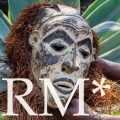Wayan Jarrah Sastrawan (Australian National University, Canberra) writes:
This story has been told many times. From June to November 1894, two colonizing powers battled for control over the tropical island of Lombok in present-day Indonesia. One was the Netherlands, which was consolidating its grip on the East Indies by subduing the archipelago’s last autonomous kingdoms. The other was a kingdom ruled by Hindu Balinese who had conquered and settled on their neighbouring island of Lombok.
What these accounts have so far missed is the history of the Balinese settler society that was defeated in this conquest, as related in that society’s own historical sources.
The looting of the maharaja’s palace yielded not only gold and silver but also a treasury of manuscripts that reveal many aspects of the culture and history of the Balinese who dominated Lombok in the nineteenth century.
The story shows how the production, purchase, and theft of manuscripts had been intertwined with struggles for power in Bali and Lombok since the seventeenth century.
The Lombok Collection complicates some simplistic notions of cultural heritage and the repatriation agenda. By looking closely at the pre-colonial history of these manuscripts, rather than only considering their post-1894 trajectories, we discover that violence was inherent in the very creation of the collection.
An appendix offers a guide to the past and current locations of parts of the Lombok Collection that are held by institutions. Some items listed here have an uncertain connection to the 1894 war and may have been collected in Lombok much later than the maharaja’s defeat; such items are indicated by a question mark.


